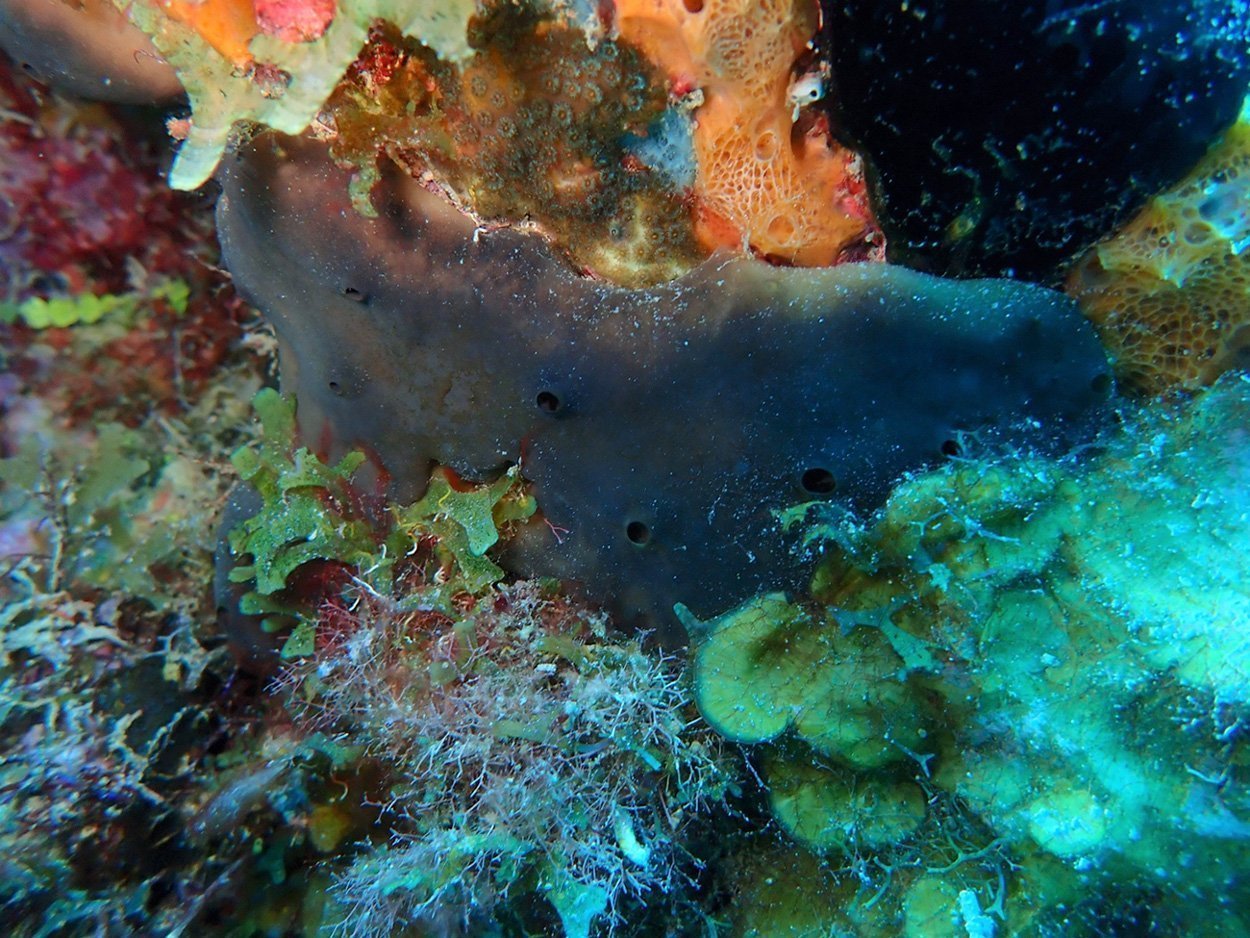
A tropical sea sponge can be seen in this photo. These inconspicuous, ancient beings feed with the help of microbial symbionts, which give them particularly efficient digestion in nutrient-poor water.
Sponges are among the oldest animal phyla and can be found all over the world. Most types of sponge can filter organic particles and also dissolved organic nutrients such as sugar from water in order to nourish themselves. To do this, they generate a flow of water that brings the nutrients to the inner cavity, where the filter cells absorb them. To digest the nutrients, the sponges work with microbial symbionts.
How the sponge host and its microbiome work together to process food has so far been a mystery. That is why researchers working with Meggie Hudspith from the University of Amsterdam used imaging techniques to track the absorption and digestion of dissolved and undissolved organic material by the sponges and their symbionts. They investigated this, among other things, in the sponge species Plakortis angulospiculatus shown on our picture. It occurs among other things in the tropical Atlantic off Brazil.
The investigation revealed something surprising: contrary to what was thought, the microbial symbionts do not help with the absorption and processing of nutrients in the filter cells. Instead, the sponges take up dissolved organic nutrients and particles independently via their filter cells and digest them by trapping the food particles in food vacuoles.
The symbionts only come into play later: the waste materials that accumulate in the filter cells are absorbed by the bacteria and thus, to a certain extent, recycled. This makes the remaining nutrients from this “waste” accessible to the sponge again. In this way, the symbionts hold the limited nutrients in the sponge so that they are not released into the environment.
“Our results show how sponges can thrive in nutrient-poor ecosystems such as coral reefs: the symbionts act as ‘mini recyclers’ because important nutrients are retained by the sponge instead of being released into the environment,” summarizes Hudspith.